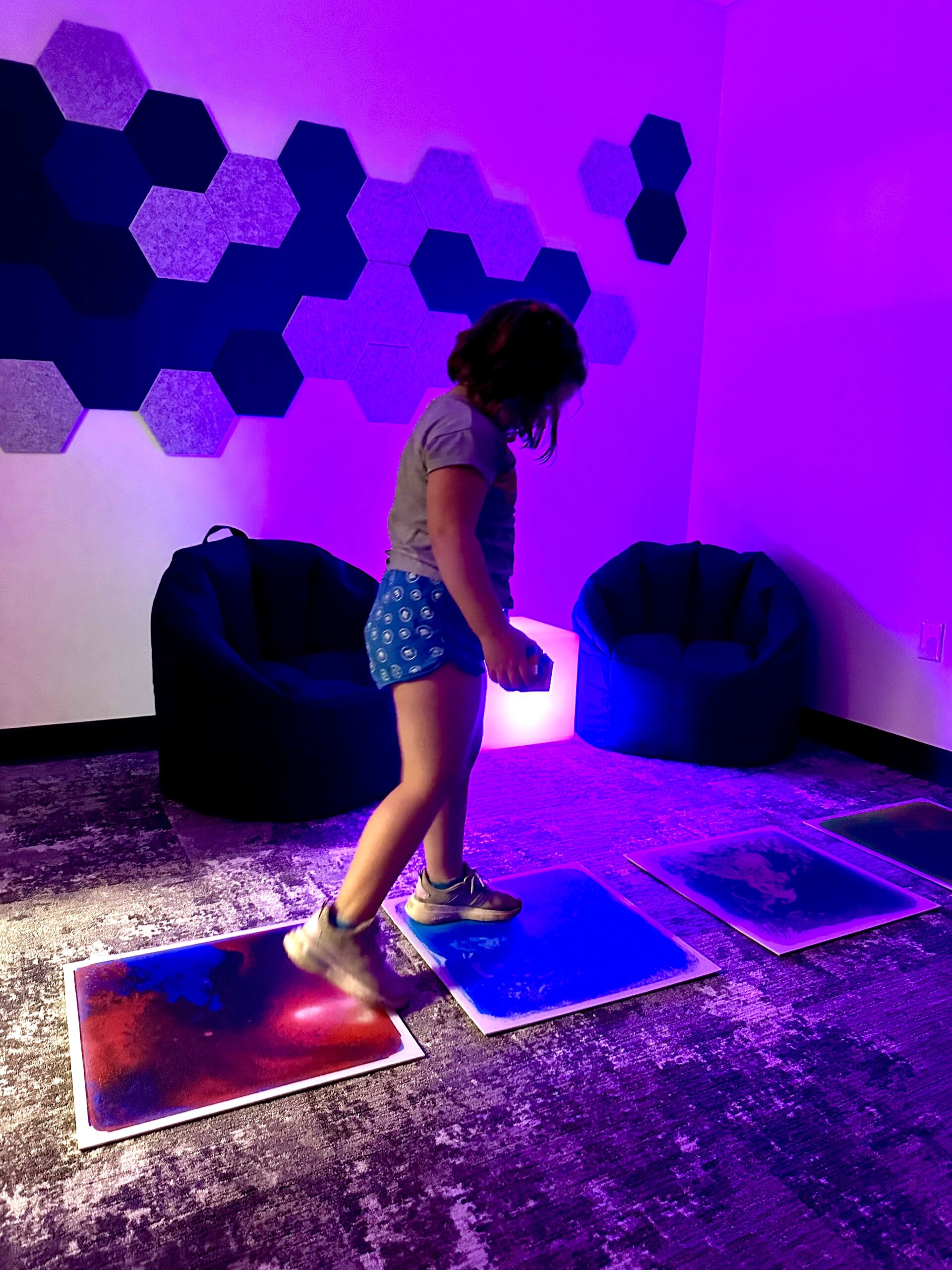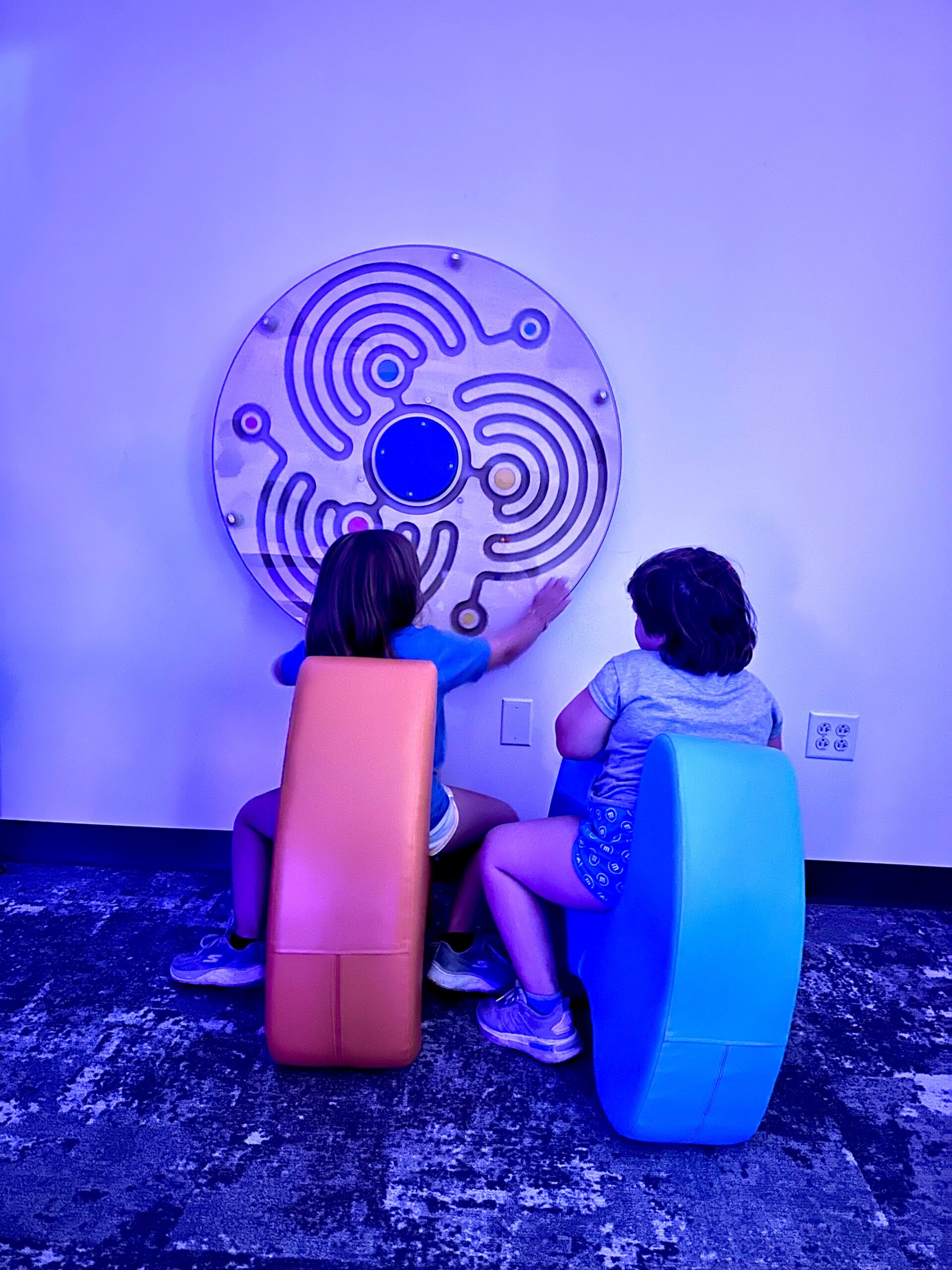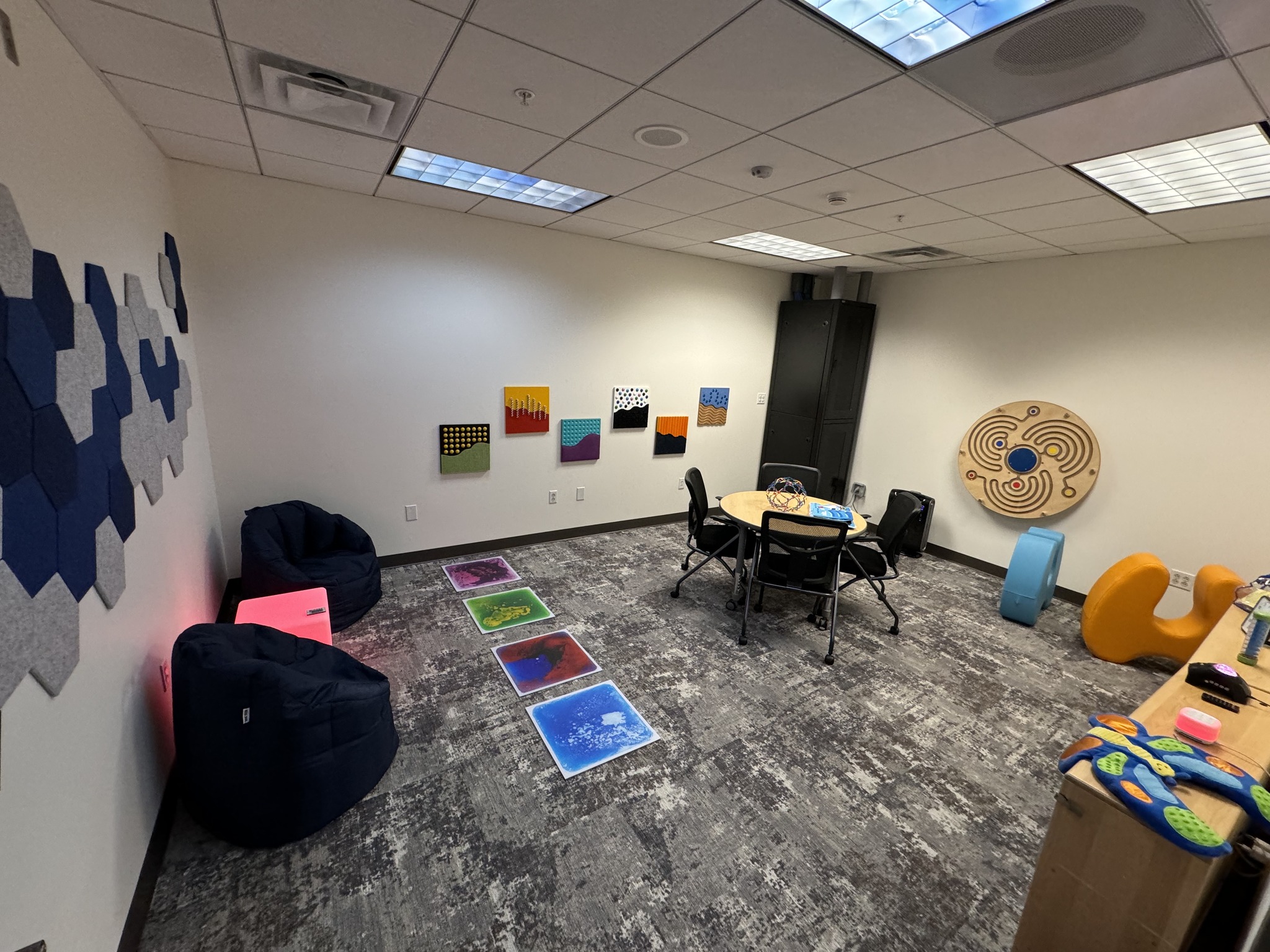


By Jamie Hanley
Of all the construction projects at the CPH Library over the last few years, who knew that a small, unassuming, former office space would prove to be a popular attraction for the neurodiverse [those whose brains work differently than what is considered typical and encompasses a variety of neurological conditions and differences]. What began as a conversation of how best to use this newly vacated space in the Library morphed into a question of ‘what else could we do??’ Simply put, why just another conference room when it could be more? And so, the idea of a sensory room was born.
In basic terms, a quick Google search tells us that a sensory room is “a specially designed space intended to help individuals regulate their sensory input and promote well-being by providing a safe and calming environment; particularly those with sensory processing disorders, autism, or other developmental disabilities”. A tour of the room and you’ll see that the Library hit the mark when it comes to furnishing this new space as well. By design, it incorporates a variety of elements to stimulate different senses – there are wall mounted interactive panels to explore different tactile sensory stimuli, bean bags, a white noise machine (that doubles as an air purifier!), a color changing light cube, smaller toys and fidget devices. My personal favorites were the addictive squishy liquid floor mats and the giant maze on the wall.
In addition to being used as designed, the space can also be used as a small conference room or study room. According to Library staff, the room has been very popular with the public – from families, to individuals, therapists, community groups, and more; and they have been very pleased with how frequently the room is being used overall, and feedback from the public has been very positive.
Jim Foster, Assistant Director and liaison to the Friends, had this to say:
“I thought that it would be popular, but it has honestly exceeded my expectations! It has been used almost 1000 times in the first year. Mostly walk-in (as opposed to reserving ahead of time) and mostly it is being used as a ‘Sensory Room’ rather than just as a Study Room. I would say less than 10% of the time as a study room.”
The Library is responsive in listening to what the public wants and needs, and has created a calming environment for people of all ages who might need a little sensory support. Sensory support is a key factor in managing stress and anxiety for many individuals, children and adults alike. CPH Library has shown themselves to be cutting edge – we can be proud to say that we are one of but a select few public libraries in New York state to have this feature!
Barb Reese, Early Literacy and Programming Specialist at the CPH Library, had this to say in regard to the public and how they are embracing the new space:
“We have had lots of positive feedback from our special needs community as well as from parents whose children get over stimulated and just need to take a break. Many of the children look forward to coming to the library so they can spend some time in the Sensory Room. I have also been contacted by other organizations that are looking to create a sensory room and they are looking to our room as a benchmark”
The CFH Friends of the Library are happy to say that this project was funded largely in part by our organization, and we have you to thank – each and every one of our current members and yet-to-be members! And THANK YOU to every member of the community who support all of our fundraising efforts – from the wildly popular Used Book Sales, Craft Supply Swap and Plant Swap, to our travel opportunities, and all our Two Towns One Book and other community events – these are geared towards supporting the Library’s projects and programs like this one.
So, to answer the original question…a resounding yes – if you build it, they will indeed come!
For more on neurodiversity: https://www.verywellmind.com/what-is-neurodiversity-5193463
